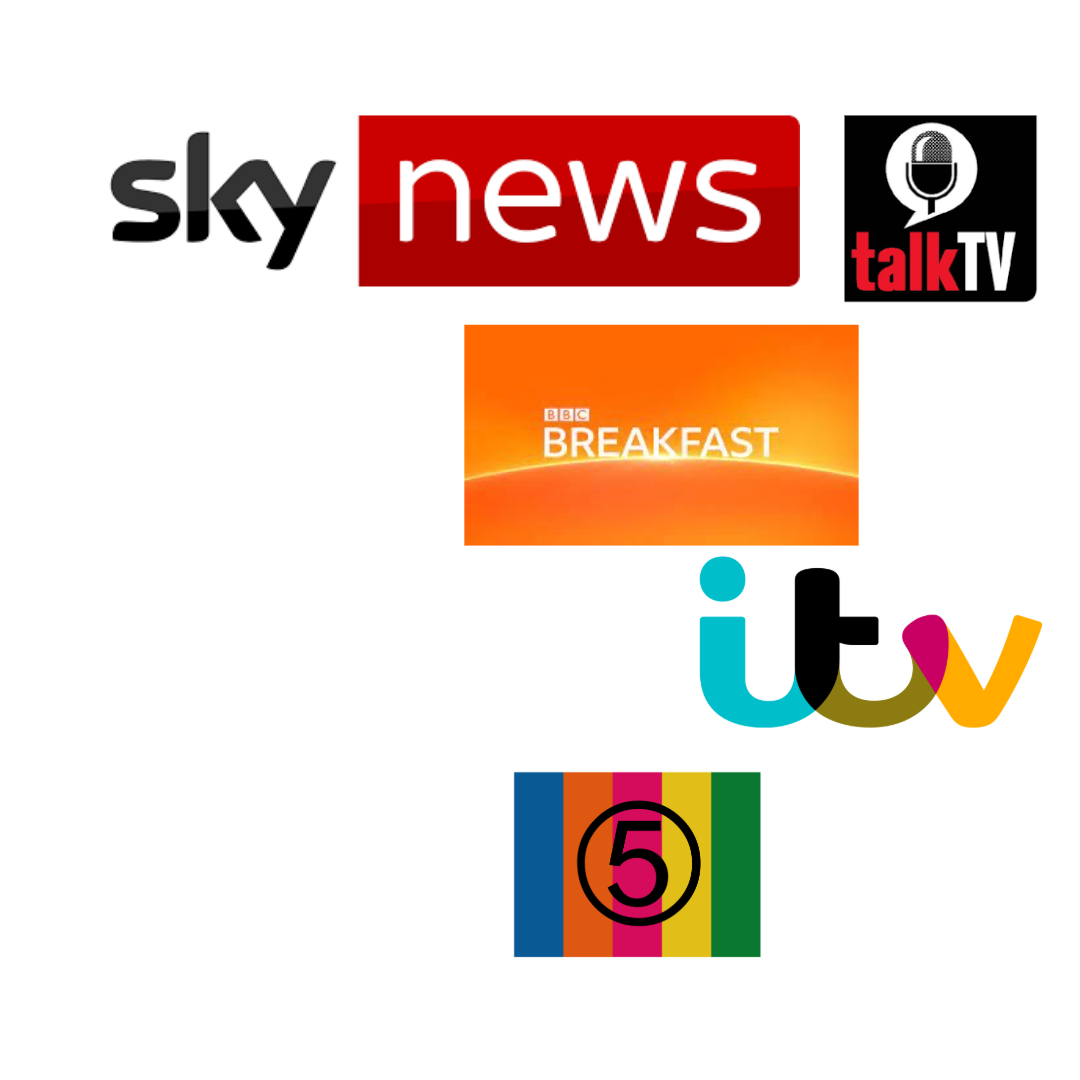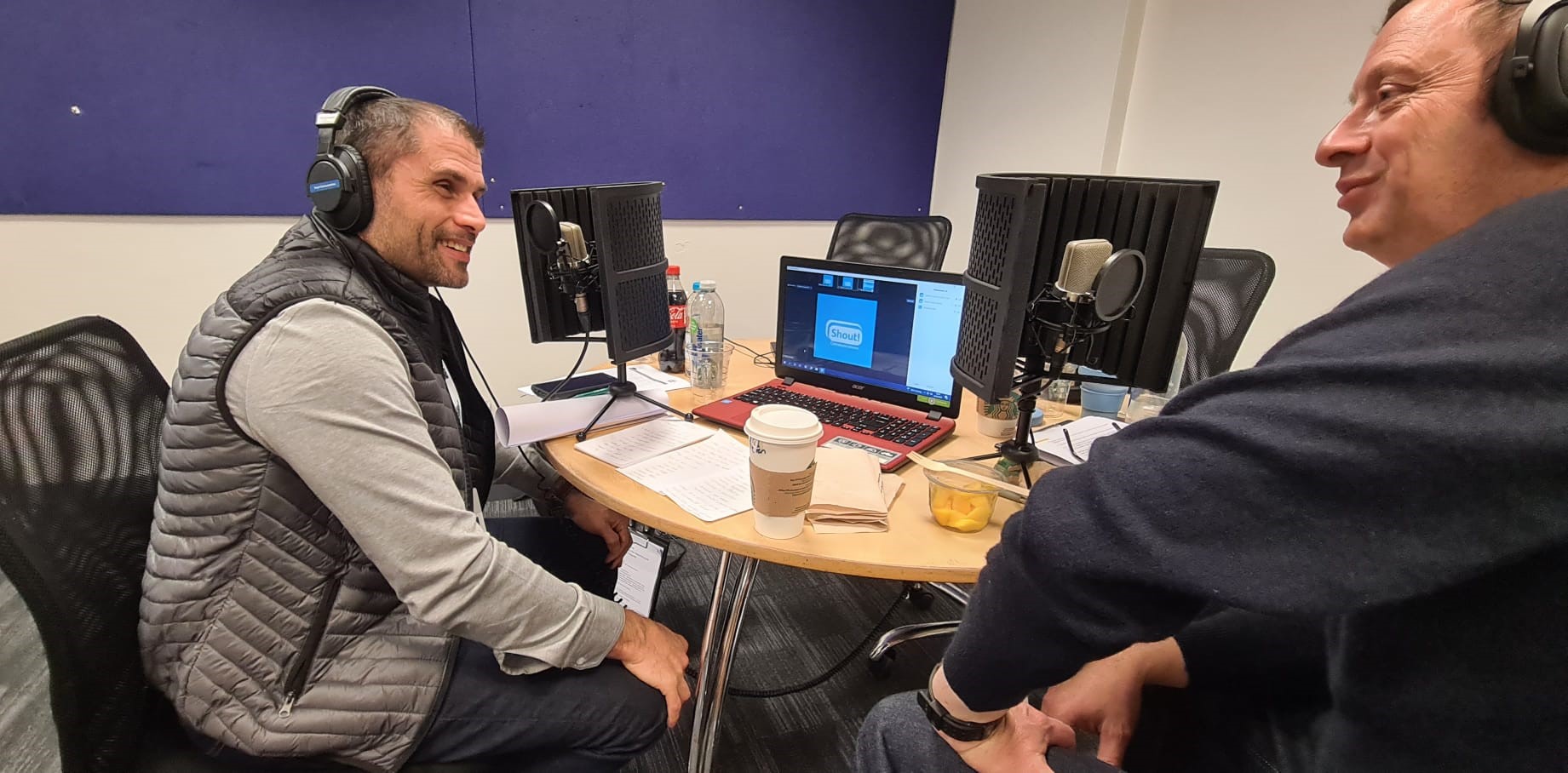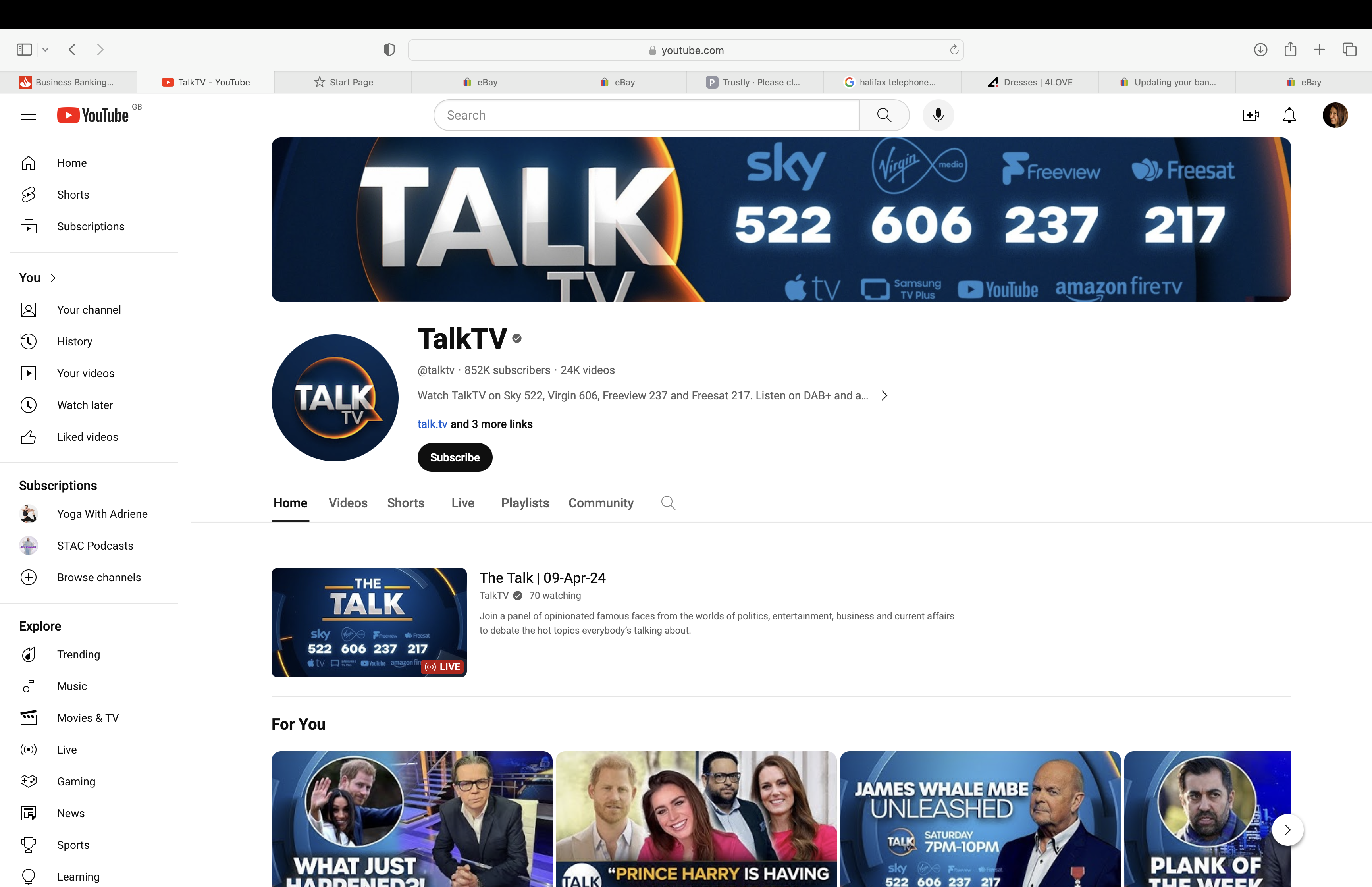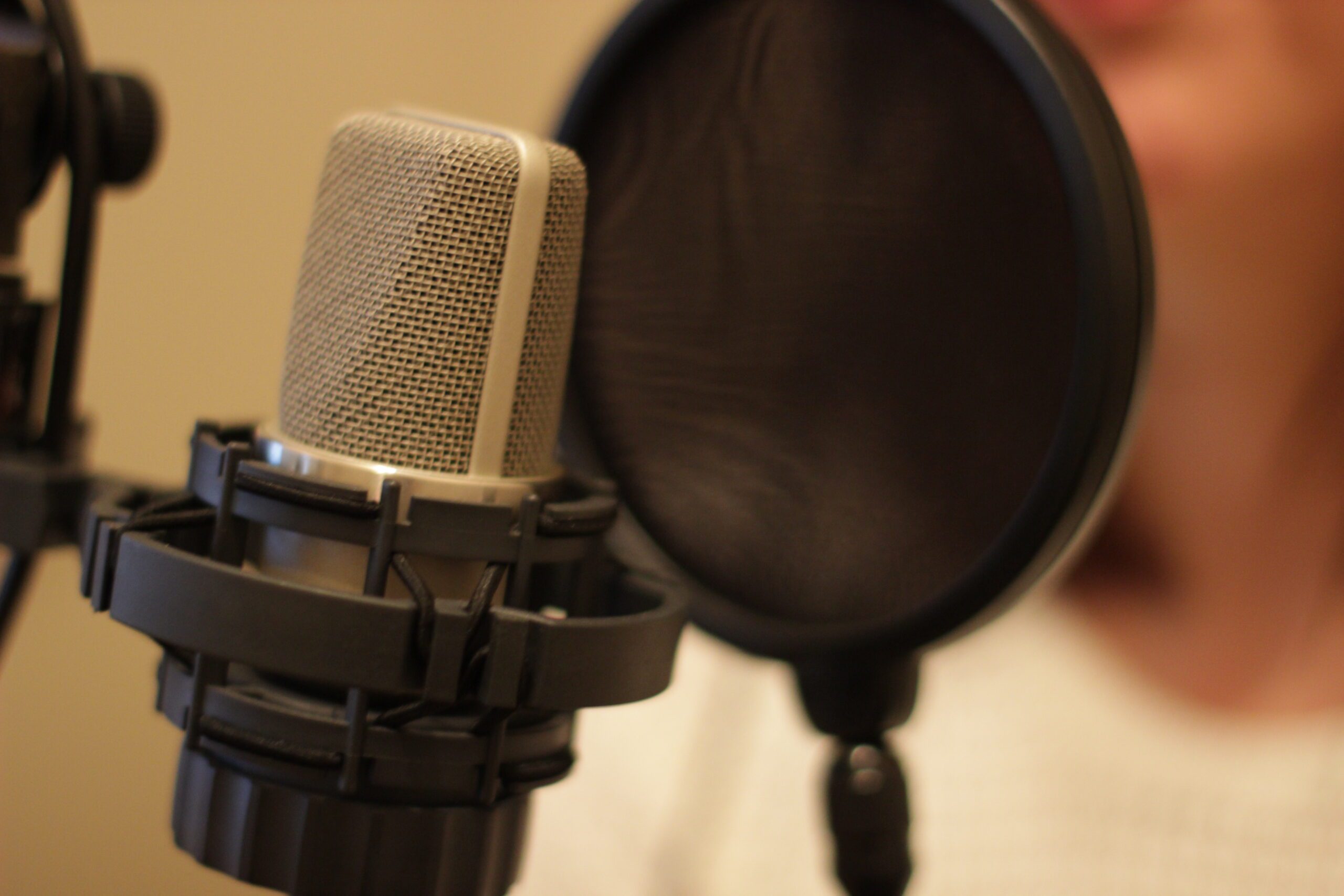In this article, we share examples of the key broadcast media channels and explain how each channel can be used effectively in a PR campaign. Broadcast media includes all the different mediums used to communicate, transmit and broadcast to the public or masses.
What is broadcast media?
The term broadcast originally referred to the use of radio waves to transmit radio content. It later extended to include television as well.
Broadcast media has evolved even more in the last few decades and the concept is now also used to include podcasts and online streamed video.
The primary purpose of this type of media is to broadcast and communicate with the public.
For the purposes of broadcast PR, we mostly focus on TV and radio when we are working on a campaign. However, there are more types of broadcast media.
Some examples of broadcast media
Television
It can be transmitted on terrestrial, satellite, cable or via online video platforms.
Radio
These days, most radio stations can be found on DAB, DAB+ or online. However, some still broadcast on FM and even AM!
Podcasts
They can be found on multiple online platforms and are mostly consumed on mobile phones.
Online streamed video
Radio stations and TV channels have been using video streaming platforms such as YouTube for many years to create extra content. However, we are now seeing networks maximising the use of online streaming and even ditching traditional transmission in favour of digital only.
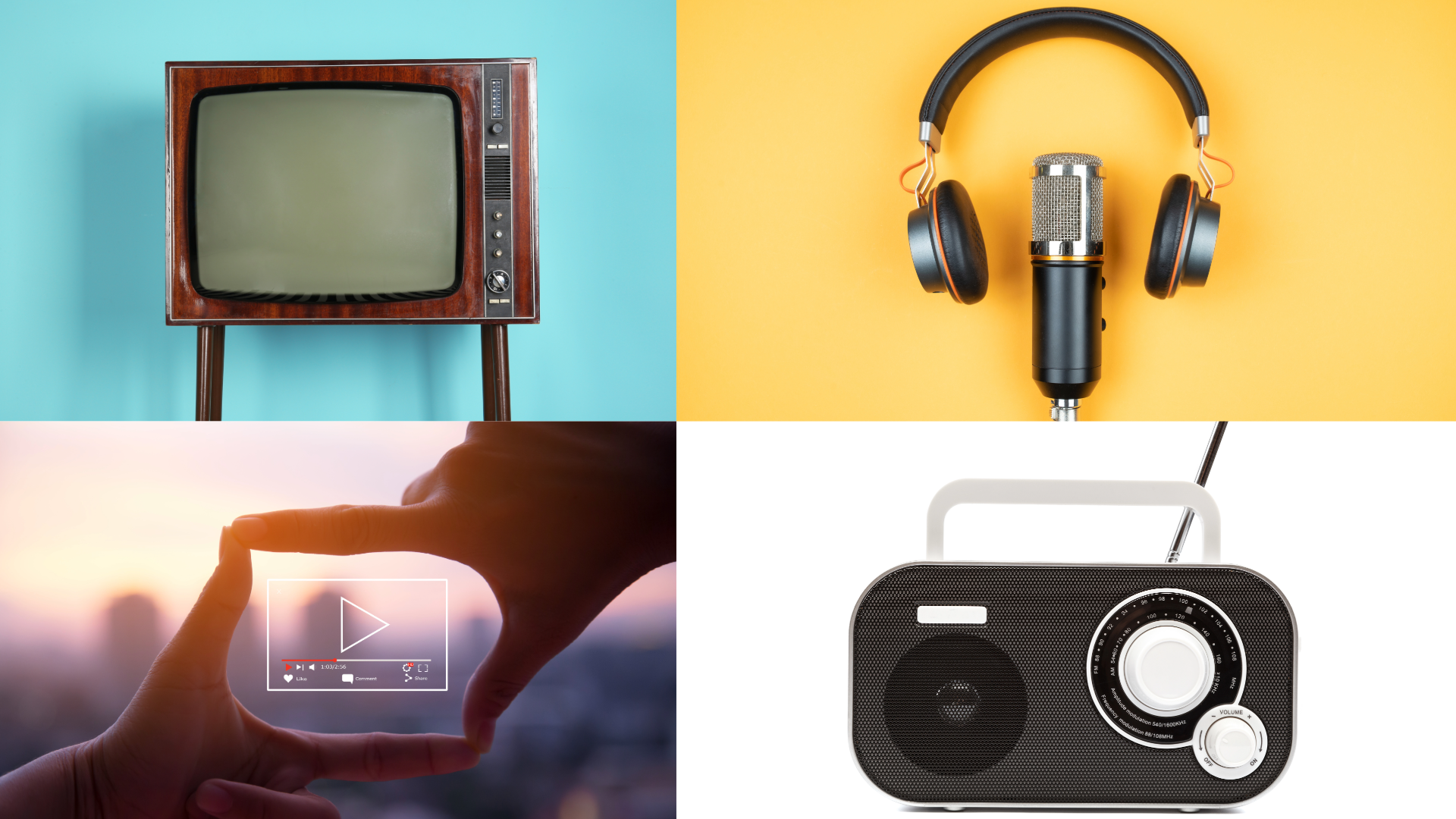
The different types of broadcast media and how businesses can utilise each type of media in a PR campaign
Broadcast media is used by businesses for marketing and advertising purposes with the aim to create a more significant impact on the public.
Brands, individuals, charities, and even government agencies use broadcast media to tell people more about their products and services.
Broadcast media is, without a doubt, a big platform for marketing brands and products. Broadcast PR goes beyond adverts, focusing on securing coverage for clients in different ways, such as on the news and daytime programmes.
By placing PR stories on TV and radio, brands have the potential to reach big audiences while still being able to target certain demographics (gender, age, geography, etc). This is also cheaper than paying for an advert or sponsorship of a programme.
One way to do it is to offer an expert who can comment on a topical news story or to provide exclusive access to a location or event.
For example, a law firm could offer a criminal barrister who can comment on the outcome of a high-profile court case. This pitch would be elevated if the law firm can accommodate a camera crew at their offices so they can film the interview on location.
One of the disadvantages of news programmes is the fact that they are very strict when it comes to branding. When a client wants to prioritise brand mentions or perhaps the promotion of a product, they may want to consider landing an interview on a daytime programme instead.
The PR pitches considered by a daytime programme such as Morning Live on BBC One, Good Morning Britain on ITV 1 or Jeremy Vine on Channel 5 are more varied. It then becomes possible to pitch an interview with a celebrity fronting a campaign to raise awareness about a health condition, or even to offer a product for it to be tested and featured in a review segment.
Sometimes daytime programmes will also look for case studies. That is, people who are not paid by a brand but are willing to go on the programme to tell a personal story. Case studies are often requested in relation to PR stories by charities or non-profit organisations.
When it comes to stories for TV, the main element that will make a pitch stand out from the others is pictures. If relevant, it is a good idea to commission B-roll and offer it to a television channel or programme as part of the package. Producers who find themselves in a position where they have to pick between two similar stories are more likely to go for the one that comes with pictures.
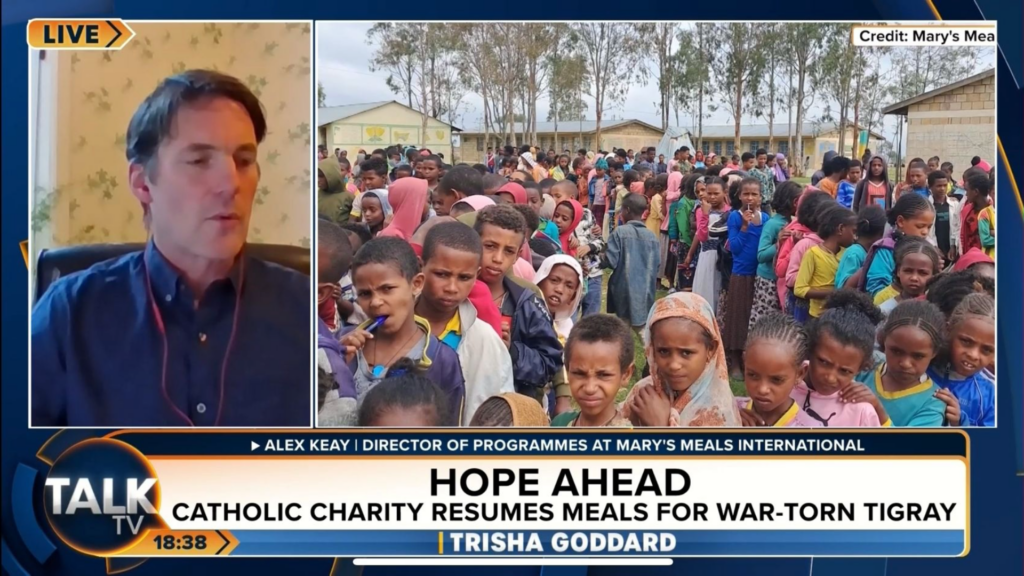
It is also helpful to offer guests who can travel to a television studio. However, since the Covid-19 pandemic, producers are happy book guests on video link as long as they have a strong internet signal, and it makes editorial sense for them to be elsewhere.
For example, if a celebrity is doing an interview to promote a non-profit and they are currently doing a race or walk across the UK to raise money, it is editorially justified for them to join remotely while they are on their journey.
Some opportunities are also found in documentaries and other long-form TV formats. However, these will be tied to a particular expert linked to a brand sharing their knowledge or opinion on a subject rather than a PR story.
TV is a type of broadcast media that will always play a key role in any multi-channel PR campaign.
One of the advantages of going down this route is that the research can be used to target certain demographics. By offering data split by age, gender and geography, multiple press release versions can be produced and distributed to target different outlets.
For example, a client could commission a survey asking how often people change their email password. There could be one press release focused on those aged 18-25, which could be pitched to a national breakfast show for a music radio station such as Capital FM. On the other hand, another release with the same data points but for adults over 40 could land on an outlet such as Times Radio.
Naturally, audio is one of the elements that will grab the attention of radio producers. It is useful to offer additional clips or music if they are relevant to the campaign.
However, radio is not just radio anymore. Many studios across the country have had video cameras installed in recent years, with some routinely streaming programmes live. For this reason, it is also a good idea to provide B-roll if available.
Broadcasters often promote their own content on social media platforms such as X (formerly Twitter), Instagram or TikTok. For this reason, it is standard practice for producers to encourage remote guests to appear on Zoom or FaceTime video, rather than on the phone. Some high-profile shows will even make it a non-negotiable requirement. So, when offering a PR story, it is key that the spokesperson doing the interviews is also happy to appear on vision.
If it makes editorial sense, broadcasters such as the BBC, Sky, or LBC will sometimes go as far as writing up an interview as a piece of copy for their website. They may even include a video clip if the interview has taken place in vision and any extra audio or B-roll that has originally been supplied to the producer.
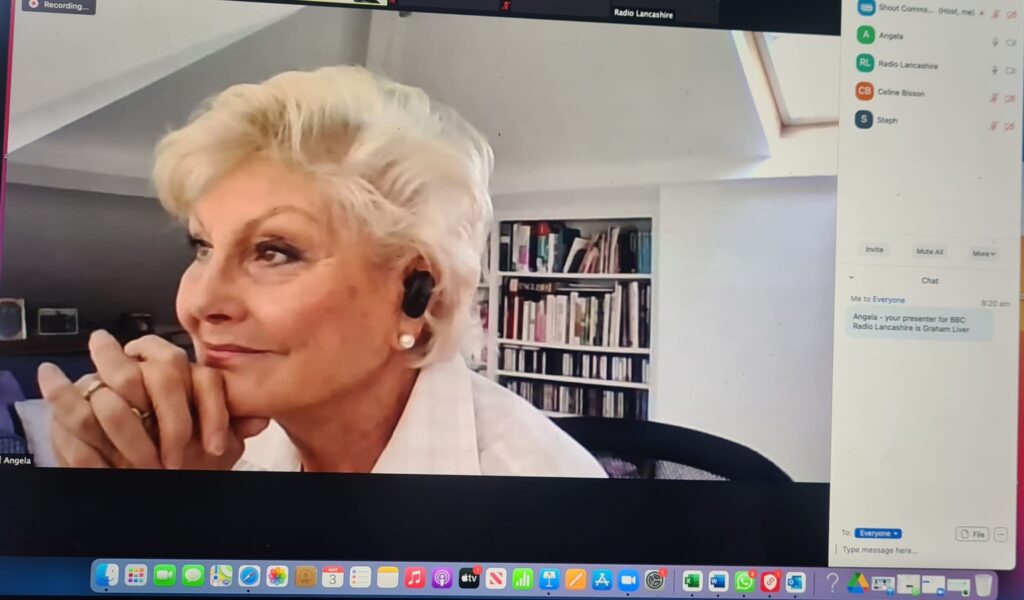
Radio days can help clients reach their desired audience. At Shout! Communications we can help reach a minimum of 10-12 opportunities across BBC and commercial, national and regional stations.
Additionally, syndicated radio interviews are an excellent tool get through to regional commercial stations with a smaller reach. Some of them will happily pick up these packaged interviews and play them several times throughout the week. This option is very time effective as the package is only recorded and edited once.
The future of broadcast media – what will be the top broadcast media channels and opportunities over the next few years?
When it comes to the future of broadcast media, it is difficult to make predictions but the one thing that is certain is that there is change afoot.
It is clear that TV and radio will remain key for broadcast PR professionals and brands wishing to get through to big audiences. However, consumption habits are changing, and more and more people are consuming broadcast media on demand and on mobile phones, computers or tablets.
To make the most of your next broadcast PR campaign get in touch with our media relations team on 020 7240 7373 or email hello@shoutcommunications.co.uk..
